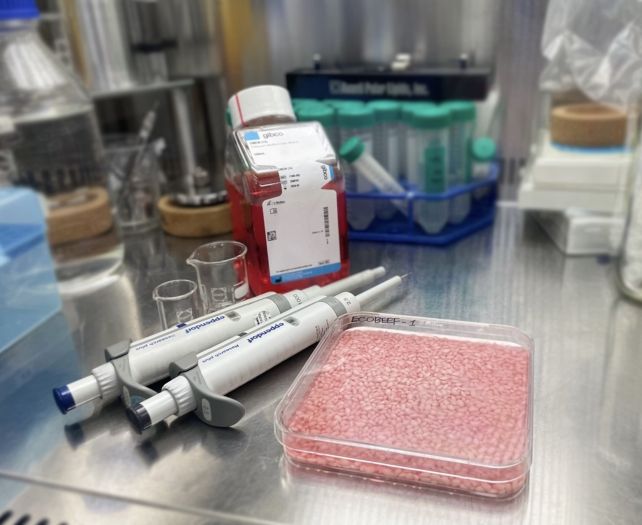
As the global population continues to rise, the strain on the environment from food production escalates. One potential solution lies in lab-cultured meat, which could alleviate pressure on resources. In a pioneering effort, Korean scientists have devised a novel approach to this concept, creating a hybrid food comprising bovine fat and muscle cells grown within grains of rice.
Led by biomolecular engineer Sohyeon Park at Yonsei University, the team developed this innovative food product as a sustainable alternative to conventional livestock farming. By leveraging the porous nature of rice grains, they utilized them as scaffolds for the growth of lab-cultured animal cells.
The process involved coating rice grains with food-grade fish gelatin and enzymes to facilitate cell adhesion and growth. Cow muscle and fat stem cells were then seeded onto the rice grains and cultivated for 9 to 11 days in a petri dish.
The resulting hybrid food product, resembling a combination of meat mince and rice, demonstrated promising nutritional benefits. Analysis revealed a significant increase in protein and fat content compared to untreated rice, making it a potentially rich source of essential nutrients.
Moreover, the production of this hybrid rice showed substantially lower carbon emissions compared to traditional beef production, offering a more environmentally friendly alternative. Additionally, the cost of hybrid rice per gram of protein was estimated to be lower than that of beef, both in terms of emissions and monetary expense.
The team aims to further optimize the production process to enhance efficiency and reduce production time. They also plan to explore flavor modifications resulting from the addition of beef muscle and fat cells, presenting opportunities for culinary experimentation.
Overall, this innovative hybrid food holds promise for addressing food security challenges, with potential applications ranging from famine relief to military rations and space food.
The study detailing this groundbreaking research has been published in Matter.







